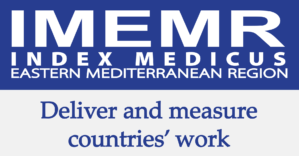Correlation of urinary gamma glutamyl transferase to creatinine ratio with albumin creatinine ratio in patients with type 2 diabetes mellitus
DOI:
https://doi.org/10.53685/jshmdc.v5i1.139Keywords:
Diabetes, Urinary Gamma Glutamyl Transferase to creatinine ratio, Urinary albumin creatinine ratioAbstract
Background: Diabetic Nephropathy is one of the most serious outcomes of Diabetes Mellitus worldwide. As tubular injury precedes albuminuria, tubular enzyme Gamma Glutamyl Transferase (GGT) may serve as a more sensitive diagnostic biomarker for diabetic nephropathy.
Objective: To determine and correlate urinary Gamma Glutamyl Transferase to creatinine ratio with urinary albumin creatinine ratio (uACR) in Type 2 diabetics based on gender.
Methods: A cross-sectional study was undertaken at Shaikh Zayed Hospital from March 2022 to April 2023. A total of 100 male and female participants were included in this study. The study participants included 75 type 2 diabetics and 25 controls. The diabetic group was subdivided into normoalbuminuric and microalbuminuric based on urinary albumin creatinine ratio. All subjects' fasting blood glucose, urinary albumin, urinary creatinine, and urinary GGT levels were measured on the automated chemistry analyzer. The data was analyzed by SPSS version 24. “t-test” was used to compare the variables between different groups. The Pearson correlation test was used to establish the correlation between Gamma Glutamyl Transferase to creatinine ratio and uACR.
Results: Urinary GGT (uGGT) levels were significantly higher in all type 2 diabetics as compared to controls (p <0.001). Both urinary albumin and uACR were raised in male diabetics (p<0.001) and female diabetics (p<0.005) as compared to controls, in male diabetics more increase was observed (p<0.001). A highly significant positive correlation was observed between uGGT:Creatinine ratio and uACR of all normoalbuminuric patients (‘r’ males=0.837 & females=0.919) and microalbuminuric patients (‘r’ males=0.600 & females=0.636) at p<0.001.
Conclusion: Urinary Gamma Glutamyl Transferase to creatinine ratio is positively correlated with urinary albumin creatinine ratio and may serve as a more sensitive biomarker than urinary albumin creatinine ratio in diabetic patients with renal damage.
References
Alicic RZ, Rooney MT, Tuttle KR. Diabetic kidney disease: Challenges, progress, and possibilities. Clin J Am Soc Nephrol. 2017; 12(12): 2032-2045.doi: 10.2215/CJN.11491116 DOI: https://doi.org/10.2215/CJN.11491116
Sagoo MK, Gnudi L. Diabetic nephropathy: An overview. Methods Mol Biol. 2020; 2067: 3-7.doi:10.1007/978-1-4939-9841-8_1 DOI: https://doi.org/10.1007/978-1-4939-9841-8_1
Uwaezuoke SN. The role of novel biomarkers in predicting diabetic nephropathy: a review. Int J Nephrol Renovasc Dis. 2017; 10: 221–231. doi:10.2147/IJNRD.S143186 DOI: https://doi.org/10.2147/IJNRD.S143186
Papadopoulou-Marketou N, Kanaka-Gantenbein C, Marketos N, Chrousos GP, Papassotiriou I. Biomarkers of diabetic nephropathy: A 2017 update. Crit Rev Clin Lab Sci. 2017; 54(5): 326-342. doi:10.1080/10408363.2017.1377682
Löwen J, Gröne EF, Groß-Weißmann M-L, Bestvater F, Gröne H-J, Kriz W. Pathomorphological sequence of nephron loss in diabetic nephropathy. Am J Physiol Renal Physiol.2021;321(5): F600–16. doi:10.1152/ajp renal.00669.2020 DOI: https://doi.org/10.1152/ajprenal.00669.2020
Gluhovschi C, Gluhovschi G, Petrica L, Timar R, Velciov S, Ionita I, et al. Urinary biomarkers in the assessment of early diabetic nephropathy. J Diabetes Res. 2016; 2016: 4626125. doi:10.1155 /2016/4626125 DOI: https://doi.org/10.1155/2016/4626125
Bazargani B, Moghtaderi M. New biomarkers in early diagnosis of acute Kidney Injury in children. Avicenna J Med Biotechnol. 2022;14(4):264-269. doi:10.18502/ajmb.v14i4.10478 DOI: https://doi.org/10.18502/ajmb.v14i4.10478
Ndrepepa G, Colleran R, Kastrati A. Gamma-glutamyl transferase and the risk of atherosclerosis and coronary heart disease. Clin Chim Acta. 2018; 476: 130-138. doi:10.1016/j. cca.2017. 11.026 DOI: https://doi.org/10.1016/j.cca.2017.11.026
Bhatt MP, Rai N, Pokhrel S, Acharya P, Marhatta SB, Khanal DP, et al. Standardization of visible kinetic assay for the estimation of plasma glucose by glucose oxidase and peroxidase method. JMMIHS.2021;7(1):49-59.doi:10.3126/jmmihs.v 7i1.43150 DOI: https://doi.org/10.3126/jmmihs.v7i1.43150
Sun K, Li F, Lin D, Qi Y, Xu M, Li N, et al. Serum gamma-glutamyltransferase is associated with albuminuria: a population-based study. PLoS One. 2014; 9(12). doi:10.1371/journal.pone.0114 970 DOI: https://doi.org/10.1371/journal.pone.0114970
Jędrusik P, Symonides B, Gaciong Z. Performance of 24-hour urinary creatinine excretion-estimating equations in relation to measured 24-hour urinary creatinine excretion in hospitalized hypertensive patients. Sci Rep. 2019; 9(1):3593. doi:10.1038/s41598-019-40416-w DOI: https://doi.org/10.1038/s41598-019-40416-w
Ambade V, Sing P, Somani BL, Basanna D. Urinary N-acetyl beta glucosaminidase and gamma glutamyl transferase as early markers of diabetic nephropathy. Indian J Clin Biochem. 2006;21(2):142-148. doi:10.1007/ BF02912930 DOI: https://doi.org/10.1007/BF02912930
Jung K, Schulze G, Reinholdt C. Different diuresis-dependent excretions of urinary enzymes:N-acetyl-beta-D-glucosaminidase, alanine aminopeptidase, alkaline phosphatase, and gamma-glutamyltransferase. Clin Chem. 1986;32(3):529–532.doi:10.1093/clinchem/32.3. 529 DOI: https://doi.org/10.1093/clinchem/32.3.529
Sasikala, Bitla AR, Sachan A. Urinary brush border enzymes for early diagnosis of tubular dysfunction in patients with type 2 diabetes mellitus. Int J Res Med Sci. 2019;7(6): 2015.doi: 10.18203/23206012.ijrms20192475 DOI: https://doi.org/10.18203/2320-6012.ijrms20192475
Papadopoulou-Marketou N, Kanaka-Gantenbein C, Marketos N, Chrousos GP, Papassotiriou I. Biomarkers of diabetic nephropathy: A 2017 update. Crit Rev Clin Lab Sci. 2017;54(5):326-42. doi:10.1080/10408363.2017.1377682 DOI: https://doi.org/10.1080/10408363.2017.1377682
de Carvalho JAM, Tatsch E, Hausen BS, Bollick YS, Moretto MB, Duarte T, et al. Urinary kidney injury molecule-1 and neutrophil gelatinase-associated lipocalin as indicators of tubular damage in normoalbuminuric patients with type 2 diabetes. Clin Biochem. 2016; 49(3): 232-236. doi:10.1016/j.clinbiochem.2015.10.016 DOI: https://doi.org/10.1016/j.clinbiochem.2015.10.016
Ho KM, Morgan DJR. The proximal tubule as the pathogenic and therapeutic target in acute kidney injury. Nephron. 2022; 146(5): 494-502. doi:10. 1159/000522341 DOI: https://doi.org/10.1159/000522341
Stratton IM, Adler AI, Neil HA, Matthews DR, Manley SE, Cull CA, et al. Association of glycaemia with macrovascular and microvascular complications of type 2 diabetes (UKPDS 35): prospective observational study. BMJ. 2000; 321(7258):405-412.doi:10.1136 /bmj.321.7258. 405 DOI: https://doi.org/10.1136/bmj.321.7258.405
Nosadini R, Velussi M, Brocco E, Bruseghin M, Abaterusso C, Saller A, et al. Course of renal function in type 2 diabetic patients with abnormalities of albumin excretion rate. Diabetes. 2000; 49(3): 476-484. doi:10.2337/diabetes.49. 3.476 DOI: https://doi.org/10.2337/diabetes.49.3.476
Dai H, Zhu L, Pan B, Li H, Dai Z, Su X. The relationship between serum γ-glutamyltransferase (GGT) and diabetic nephropathy in patients with type 2 diabetes mellitus: a cross-sectional study. Clin Exp Med. 2023; 23(7): 3619-3630. doi:10.1 007/s10238-023-00991-9 DOI: https://doi.org/10.1007/s10238-023-00991-9
Vallon V, Thomson SC. The tubular hypothesis of nephron filtration and diabetic kidney disease. Nat Rev Nephrol. 2020; 16(6): 317-336. doi:10. 1038/s41581-020-0256-y DOI: https://doi.org/10.1038/s41581-020-0256-y
Downloads
Published
How to Cite
Issue
Section
License
Copyright (c) 2024 Dr Shazia Hameed

This work is licensed under a Creative Commons Attribution-NonCommercial 4.0 International License.
You are free to:
- Share — copy and redistribute the material in any medium or format
- Adapt — remix, transform, and build upon the material
- The licensor cannot revoke these freedoms as long as you follow the license terms.
Under the following terms:
-
Attribution — You must give appropriate credit, provide a link to the license, and indicate if changes were made. You may do so in any reasonable manner, but not in any way that suggests the licensor endorses you or your use.
-
Non Commercial — You may not use the material for commercial purposes.
-
No additional restrictions — You may not apply legal terms or technological measures that legally restrict others from doing anything the license permits.




















